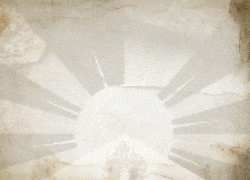GAYA – Tibetans participating in the Kalchakra pooja, the most sacred weeklong rituals of the Himalayan Buddhists, are likely to use the occasion for their anti-China campaign. The prayers to be conducted by His Holiness the Dalai Lama are scheduled to begin on January 11.
During the last Kalchakra prayers, which had to be abandoned midway on account of the serious illness of the spiritual leader who was subsequently hospitalised in Mumbai, the Tibetans organised a photo exhibition depicting Chinese oppression in Tibet, destruction of monasteries and other holy places and physical harassment of the locals at the hands of the Chinese intruders. According to intelligence sources, the department of information and international relations of the Tibetan government in exile has brought a large number of booklets, photographs, pamphlets and other publicity material for free distribution among the Kalchakra participants and other Dalai Lama devotees and tourists visiting Bodh Gaya on the eve of Kalchakra pooja.
Thousands of visitors from several western countries including Britain, France, Switzerland, Portugal, Germany and Belgium, are likely to participate in the prayers and the Dalai Lama discourse. The occasion suits the Tibetans who narrate their tale of woes before a largely sympathetic audience. The photo exhibition attracts a large number of foreigners who also jot down statistics on the number of killings allegedly executed by the Chinese after the invasion and destruction of religious and cultural centres in Lhasa and other places in Tibet.
One of the publicity materials brought for free distribution in Bodh Gaya proclaims that without Dalai Lama’s participation in the Tibetan governance, peace and stability can not be achieved. The 38-page booklet captioned “Beijing needs the Dalai Lama for Peace and Stability in Tibet” says that the Chinese government’s perception of Tibet was inherently flawed. The publicity material says that the basic flaws in China’s new policy in its search to solve the problem of Tibet is the thinking that the solution can exclude the involvement of His Holiness the Dalai Lama. The other is in attempting to solve the problem over the heads of Tibet’s citizens.
According to the perception of the Dalai Lama followers, the exclusion of His Holiness from any process involving the settlement of the Tibet issue and bypassing of the sentiments of the Tibetans will only further complicate the problem, which, for long has been defying solution. The Chinese, according to the booklet published by the Dharamshala (Himachal Pradesh) based Tibetan government in exile, will, sooner or later, have to appreciate that the institution of the Dalai Lamas of Tibet is more than 600 years old. The first Dalai Lama was born in the year 1391. The present Dalai Lama is the fourteenth in the hierarchy. The bond between the Dalai Lama and the Tibetan people was fundamental and unbreakable and any attempt, however sustained, will never succeed in driving a wedge between the two says the booklet.
Trying to discourage china from further pursuance of its existing policy, the booklet said that China’s current policy of forcing Tibetans, particularly the monks and the nuns, to denounce His Holiness will prove counter productive.









